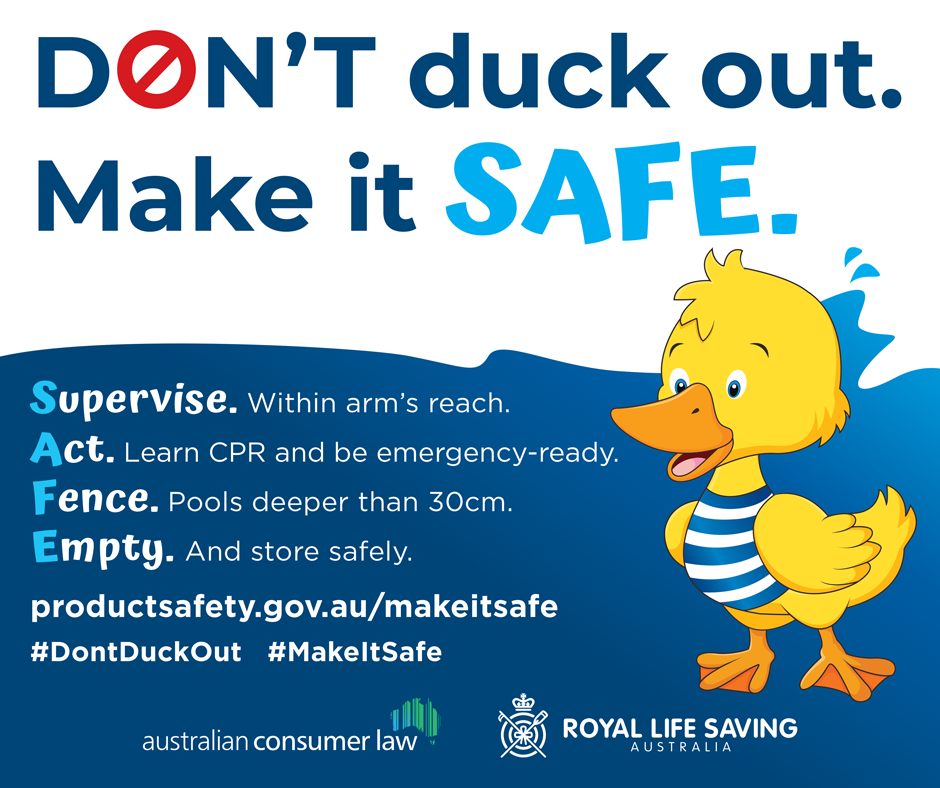Parents warned about significant drowning risks associated with portable pools
Royal Life Saving is today urging all parents and carers to be aware of the drowning risk portable swimming pools can pose to young children, as part of Kidsafe’s ‘Safe Barriers Save Lives’ campaign. Portable pools (also known as inflatable pools or wading pools) are a popular choice for many families. They can, however, pose a significant drowning risk to young children.
Royal Life Saving’s National Drowning Report 2021, published earlier this month, shows that 25 children aged 0-4 years lost their lives to drowning in 2020/21, a 108% increase on 2019/20 and a 9% increase on the 10-year average. Swimming pools, including portable pools, are the leading location for drowning in this age group, accounting for more than half of all deaths in the last 10 years.
Over the past 19 years, 21 children aged 0-4 years have drowned in portable pools around the country. In all instances, adult supervision had lapsed, and most portable pools were unfenced.
Royal Life Saving CEO Justin Scarr says “Many parents may not be aware of the legal requirement in most states and territories to fence a pool deeper than 30cm, which includes portable pools. If you’re planning on using or buying a portable pool over the warmer months, remember Don’t Duck Out, Make it Safe”.
Royal Life Saving’s ‘Don’t Duck Out, Make it Safe’ campaign, developed in conjunction with Consumer Protection WA on behalf of the Australian Competition and Consumer Commission (ACCC), aims to educate parents, grandparents and carers of young children about the drowning risk associated with portable swimming pools, and highlights four simple safety tips to reduce this risk:
- Supervise – Once a pool has water in it, children should be actively supervised and should be kept within arm’s reach at all times. The responsibility of supervision should not be left to older children as they may not recognise the signs of drowning.
- Act – Learn what to do in the event of a child drowning incident. Learn how to carry out cardiopulmonary resuscitation (CPR). Compressions and breaths should be started as soon as a child is pulled from the water, and call Triple Zero (000) for emergency help. If possible, shout for someone to call Triple Zero (000) while you continue CPR.
- Fence – In most parts of Australia, if a pool has more than 30cm of water in it, there’s a legal requirement for it to be fenced. Check the rules for safety barriers with your local council or government agency.
- Empty – When a pool is not in use, pour out the water, deflate the portable pool and store it away safely out of reach of children.

KidSafe’s annual ‘Safe Barriers Save Lives’ campaign, which was launched on Thursday 30th September 2021, calls on all pool and spa owners to check the safety of their barriers in the lead up to the warmer months.
For media enquiries, contact Media Key on 0409 420 112 or 03 9769 6488.

